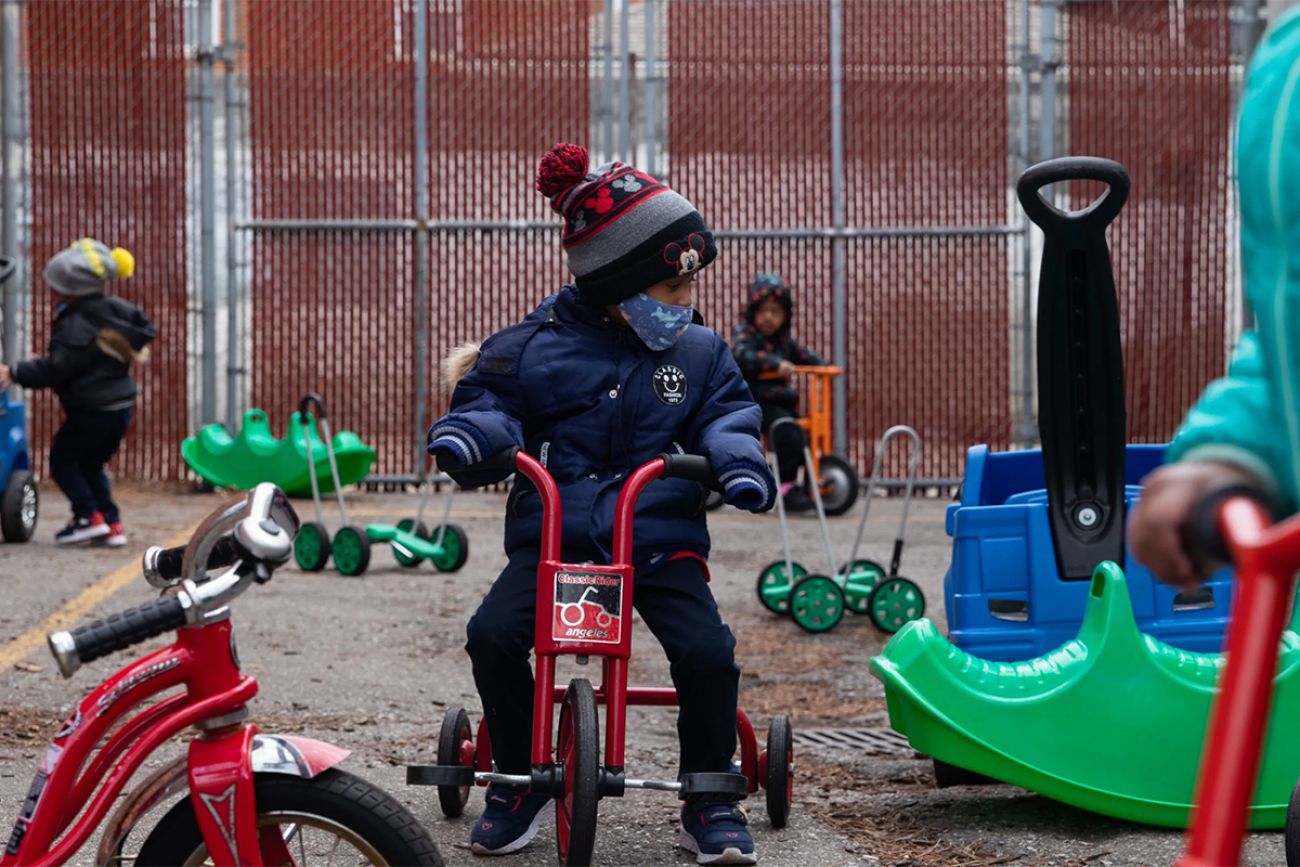Report: Fraction of Michigan kids who qualify for child care subsidies use them

Roughly one-third of children in Michigan under age 5 qualified for child care subsidies, but only 5 percent received those credits. Meanwhile, an estimated 44 percent of Michiganders live in “child care deserts” — places with a lack of licensed child care providers.
That’s according to an August analysis from the Michigan League for Public Policy and Kids Count in Michigan released this week looking at how many kids in Michigan, from birth to 5 years old, have access to educational and supportive safety nets, such as child care subsidies and food assistance programs, that are key to their economic security.
The report finds significant gaps in need versus access to programs that provide food help, offset costs for child care and cash assistance among eligible families.
Related:
- Michigan schools running short on COVID tests, imperiling in-class learning
- How many COVID cases are in Michigan schools? State has no idea anymore
“Children are not necessarily getting what they need to thrive,” said Kelsey Perdue, Kids Count in Michigan project director.
Across Michigan there were 683,798 children under age 5 as of 2019. Twenty-two percent were in four-person households making less than $25,750 at the time. Working parents are struggling to make ends meet and participation rates for assistance programs meant to help them stay afloat may not reflect true need, the fact sheet notes.
Data comes from federal and state sources and is from 2019 and 2020. Among the findings in the state and county level analysis:
- In Wayne County, about half of Michigan kids under 5 were eligible for child care subsidies, but only 7 percent received the credits. The state last year raised the income eligibility requirements through 2023, so now more kids are able to tap into these benefits.
- Quality child care is scarce in Michigan. About 44 percent of Michiganders live in child care deserts — or areas where the ratio of kids under 5 to licensed child care providers is greater than three kids per spot. The statewide ratio is 1.9 kids per spot and so, overall, Michigan has a low capacity of child care spots. Only Baraga County in the Upper Peninsula had a nearly one to one ratio.
- Nearly 50 percent of young children in Michigan were eligible to get food assistance benefits. However, only a quarter were enrolled to get that support.
- Two percent of kids received cash assistance, despite 11 percent of kids under age 5 qualifying for the help. In Wayne County, 19 percent were eligible for this help, but only 3 percent were enrolled in the state’s Family Independence Program.
These gaps affect a family’s economic security, health and well-being and the future academic success of young people, Purdue said.
When it comes to child care access, even if parents can afford it or have tapped into subsidies, it may be hard to find a spot in the first place. There is also a shortage of early childhood educators, and the industry faces challenges with recruitment and retention because of low pay, she said.
“Early childhood is so foundational to setting children up for a successful future. The architecture of the brain, for example, is set in these early foundational years, so we really wanted to have a snapshot that everyone can understand how our youngest kids in the state are doing,” she said.
Gov. Gretchen Whitmer last year unveiled a $1.4 billion plan to expand affordable child care with federal dollars. Licensed child care workers can now get $1,000 bonuses. The state raised the income eligibly for child care subsidies to 185 percent, or a family of four currently making $49,025, from 150 percent of the federal poverty level — or $39,750 — through 2023, then 160 percent for the following years.
“We had a really historic opportunity to invest in child care and we did that, so there’s been a lot of really, really positive movement, but some of these changes we need to make permanent,” Perdue said.
See what new members are saying about why they donated to Bridge Michigan:
- “In order for this information to be accurate and unbiased it must be underwritten by its readers, not by special interests.” - Larry S.
- “Not many other media sources report on the topics Bridge does.” - Susan B.
- “Your journalism is outstanding and rare these days.” - Mark S.
If you want to ensure the future of nonpartisan, nonprofit Michigan journalism, please become a member today. You, too, will be asked why you donated and maybe we'll feature your quote next time!




